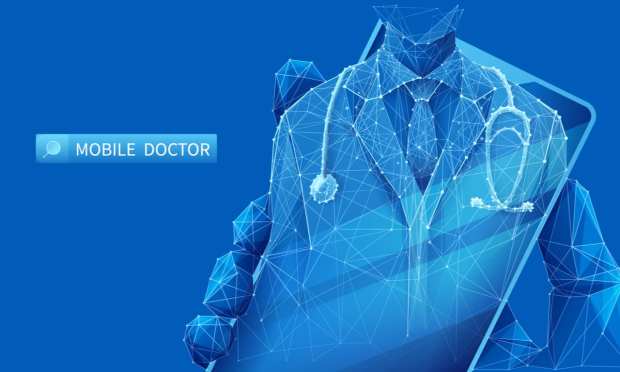Diagnosis AI: Data-Centric Approach Creates the ‘Internet of Healthcare’

The connected economy has tremendous untapped potential in the healthcare industry. A case in point can be seen in one of the key pain points uncovered by the pandemic: the lack of connectivity that exists between various points of care. When data flow is interrupted, time and money are wasted.
In an interview with PYMNTS, Dr. YiDing Yu, chief medical officer of healthcare-centric AI platform Olive, told PYMNTS that the health care system, marked by manual processes and paper flows, can be dramatically improved through the use of advanced technologies, notably artificial intelligence (AI). The company has maintained that it has been building the first healthcare “AI workforce” that automates workflows and streamlines manual tasks through its AI-underpinned software as a service.
According to the Olive marketing positioning, “Olive isn’t an expert in treating patients, and health systems shouldn’t need to be experts in AI.” In terms of mechanics, the company works with more than 40 healthcare organizations, touching hundreds of hospitals across the United States. The need for better, and timely, information flow, said Yu, is spotlighted by the pandemic, where “one of the core areas where we know there is a waste in the system is on all of the administrative burden that are placed on our doctors and our nurses simply to deliver care.”
That waste can be measured in the billions of dollars annually, she said. In one example, Yu said that prior authorizations represent a $31 billion problem for the health care system — and that nearly one in three physicians’ offices has a dedicated employee whose sole job is to work on prior authorizations.
“The process is usually done through phone calls and faxes, and actually can take up to two weeks,” noted Yu. With the manual processes involved, prior authorizations account for 92 percent of patient delays across all scheduled procedures, with significant consequences to patient care itself.
Against that backdrop of administrative waste, said Yu, Olive is designed to act as the “Internet of health care.” The overarching goal is to connect pieces and points of information within the continuum of care that are traditionally siloed. On the revenue or administrative side of the industry, Olive has been deployed as part of the workforce.
“She is the AI workforce that supports a hospital so that instead of a human having to manually fax over information, manually curated clinical documents,” Yu said. “Olive can be at trained and then be held responsible for, for doing that faster and even more accurately.”
An AI-driven solution, she maintained, differs from other software in that traditional workflow offerings are not trained to understand hundreds of thousands of rules and applying those rules to documentation, in real time, and drawing the necessary criteria from the insurance companies. Olive, she said, can submit prior authorizations on the patient’s and the doctor’s behalf, which can cut the time that a patient has to wait for a procedure by over 80 percent.
The AI platform also acts as a bridge toward getting payments done more efficiently, collecting information from the claims and the insurance side. Olive is device agnostic, she said, and all aspects of the infrastructure are HIPAA compliant. And in terms of data flow, and continual improvement, she said, “we’ve structured our artificial intelligence system so that there is a central repository of all of our learnings, so that when one Olive learns [at one health care provider location] all Olives learn.”
When one system understands that there is a new change in payment rules, say, for hospitals in Alabama, all hospitals in that orbit get the same updates — and the hospital system in Montana will be made aware of, and will monitor, those same changes.
Addressing The Pandemic
With a nod toward the pressures of the pandemic, she pointed to the fact that health systems have needed to conduct COVID testing for their communities — and have had to register thousands more patients than might have previously been in their system.
Through the platform, she said “we allowed anybody who is signing up for a COVID test to — on the Tufts website, for example — to enter their information securely. And then Olive took over the registration process. We put in the insurance information, we got the appointment scheduled in their medical record. We got the test order for them. We automated the whole process,” she said.
At a higher level, she said AI can recommend to health care practitioners that they start intervening with patients at different points of care — to improve patient care outcomes. That might mean earlier intervention with diabetes patients, for example. Well beyond the confines of blood pressure monitoring or talking scales, she said, “the next frontier in connected healthcare is ensuring that everyone across the healthcare ecosystem has actionable insights.”
She likened the approach to one that has marked the Internet of Things: Your Alexa device can control your lights, by the smart thermostat also knows when you are home (or not) and adjusts the temperature for your apartment accordingly.
“We trying to create is the same internet of healthcare that you have in your home, the same predictive, and the same action-oriented future that we deserve,” she told PYMNTS.
